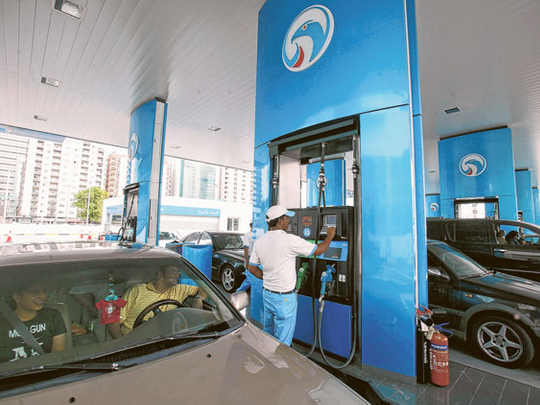
One good thing about Abu Dhabi National Oil Company (Adnoc) is its persistence in pursuing major projects even if international partners are reluctant or slow to come by.
The latest reports suggest that Occidental Petroleum is now going to partner with Adnoc in the development of the Shah Gas project. Two major oil companies, ConocoPhillips and Shell, pulled out of the development last year after lengthy negotiations, but Adnoc always maintained that it will go ahead with the project on its own if needs be.
In fact most of the development packages, costing billions, have been awarded to well-known engineering companies and the final cost is expected to be around $10 billion (Dh36.78 billion), even though the initial estimate was $13 billion. Adnoc was saving as it awarded major contracts on the projects, since costs fell in the aftermath of the economic and financial crisis of 2008.
The terms for the Occidental partnership have not yet been announced, but Occidental will be entering a project already in progress. It is well aware of the complexity of the project and its cost since its inception in 2007, when Occidental was selected by Adnoc as a potential partner.
Shah field
The Shah Gas field Southwest of Abu Dhabi is a complex and difficult development as the gas is sour and contaminated with as high as 30 per cent corrosive and poisonous hydrogen sulphide. Although the field was discovered 40 years ago, technology was not available for handling such gas until recently, and even now it requires the highest technical standards, especially in the fields of control and safety.
However, the need for natural gas in the UAE may have been a major impetus for the development.
Energy demand in the UAE is essentially based on natural gas and is growing fast. It's total energy consumption in 2005 was 1.048 billion barrels oil equivalent a day (boed) and in 2009 it was 1.447 billion boed, marking 8.4 per cent annual growth. Meanwhile, gas demand grew from about 0.8 billion boed to 1.1 billion boed or a growth rate of 9.4 per cent.
The UAE is almost totally dependent on gas for its electricity generation and water desalination, and both are growing fast due to urban and industrial development. The petrochemical industry based on gas is also expanding. The UAE is committed to producing over 7 billion cubic metres of liquefied natural gas (LNG) for export. The UAE already imports gas from Qatar as consumption has outstripped production since 2007. There are even suggestions that Dubai may import LNG to meet its demand.
Project capacity
The project capacity of raw gas will be 1 billion cubic feet a day and is likely to be completed in 2014. It will deliver sweet natural gas of about 540 million cubic feet a day to the national grid. About 10,000 tonnes a day of sulphur will be produced and all the condensate liquid sent to Habshan for further processing.
The UAE holds the world's seventh-largest gas reserves, at around 227.1 trillion cubic feet, and there are plans to expand gas development further to meet demand and cater to the growing need for gas injection for pressure maintenance in mature oil fields.
The UAE is already considering the injection of sour gas in offshore fields and this practice is now well proven in Canada and in the Tengiz oil field in Kazakhstan. Injection of sour gas will save the high cost of its processing and avoid the production of lowly priced sulphar. This will even be good for the air quality.
Considering the demand growth, Shah Gas development will contribute nicely, but it will not be enough. Hopefully Adnoc will go ahead with further development to avoid shortages.
The writer is former head of the Energy Studies Department at the Opec Secretariat in Vienna.












